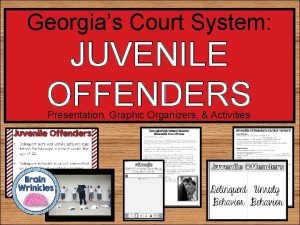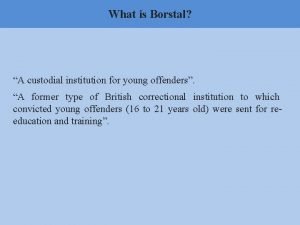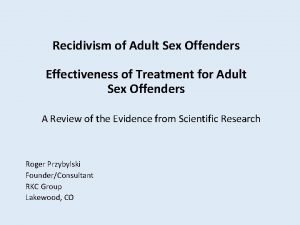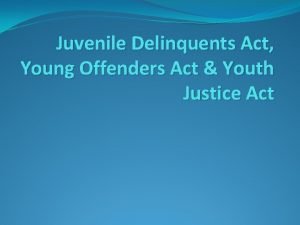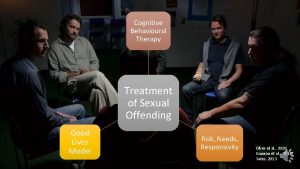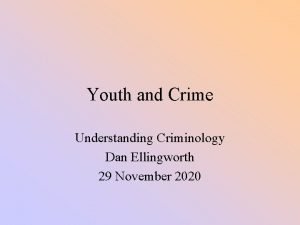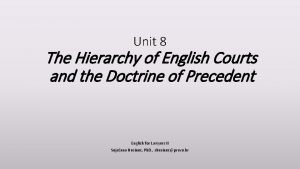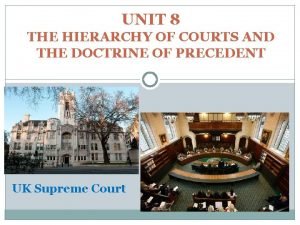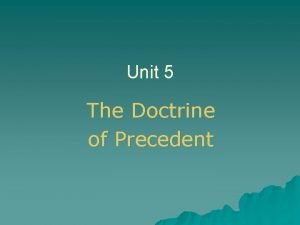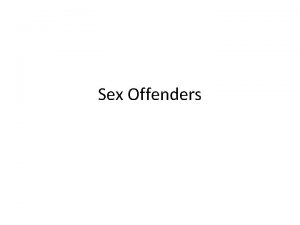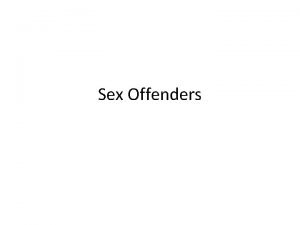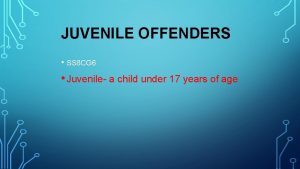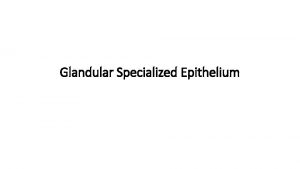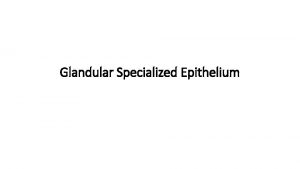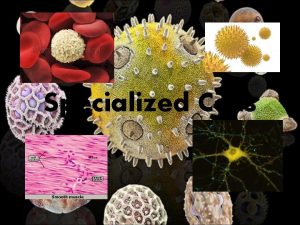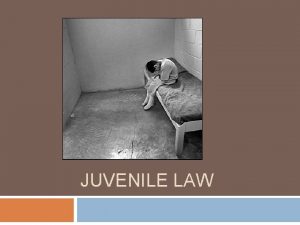Specialized Courts for Juvenile Offenders Class 23 Conceptual









- Slides: 9

Specialized Courts for Juvenile Offenders Class 23

Conceptual Framework n n Juvenile court was the original problem-solving court Creation of specialized courts is convergence of three trends n Taking seriously the Right to Treatment n n n logical extension of parens patriae doctrine (Nelson v Heyne, 491 F. 2 d 352 (1974)) Historical diversionary and interventionist underpinnings of the juvenile court Broader trends and practices in adult courts to create specialized courts to respond to social trends and problems Other subtexts (e. g. , reaction to determinacy in sentencing) The promise of benefit – a therapeutic alternative – justifies the relaxation of procedural safeguards Separation of punishment from treatment, but use of threatened punishment to coerce treatment

Why Specialized Courts? n n Juvenile courts burdened with drug cases beginning in late 1980 s Lack of specialization to respond by linking juvenile defendants to AOD or otherapeutic services Higher rates of recidivism for drug- or alcoholinvolved offenders Similar concerns about guns, increase in juvenile weapons arrests paralleled rise in juvenile homicides Juvenile Drug Arrests by Age, Sex and Race, 1980 -99

Drug Arrests of White and Black Juveniles, 1994 -2003 White Juveniles Black Juveniles

Differences from General Juvenile Courts n n n n Small caseloads Frequent hearings Immediate sanctions for violations of agreements Family involvement Elements of restorative justice (community participation in gun courts) Treatment services Mutual accountability between juveniles in treatment and treatment service providers Stronger role for judge as therapist and manager n n “intensive judicial supervision” Defense and prosecution are secondary parties to therapeutic concerns


Exit Strategies n What is success? Obviously, reducing recidivism and drug use n Systemic impacts – resource creation, mobilization, and improvement n Integration of services into web of accountability within the court n n What is failure? Reactions to positive drug tests n Responding to re-arrest n

The Details n n n n n Who is eligible and who is not? Length of Contract? How many meetings? Content of meetings? Proportionality? What particular training should the judge have to take on these new roles? n Therapist n Evaluator of services Matrix of services, competence of providers Coordination with schools and other services Response to discovery of situational contexts that require intervention to make specialized court successful n Child abuse or neglect n Parental drug or alcohol addiction n Launch protective action by court? Response to failure Termination criteria Diversion questions – stigma in subsequent proceedings

YOUR TASK n Design a court n n n Group A – Drug Court Group B – Gun Court Group C – Constitutional Critics n Elements: n Eligibility and exclusions n Length of program n Reporting requirements n Frequency of meetings n Selection of treatment providers n Therapeutic content(s) n Reactions to failure n Role of defense attorney n Role of prosecutor n Termination n Privacy
